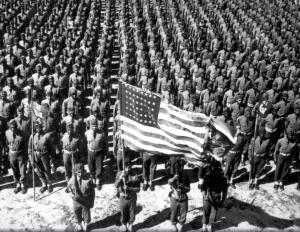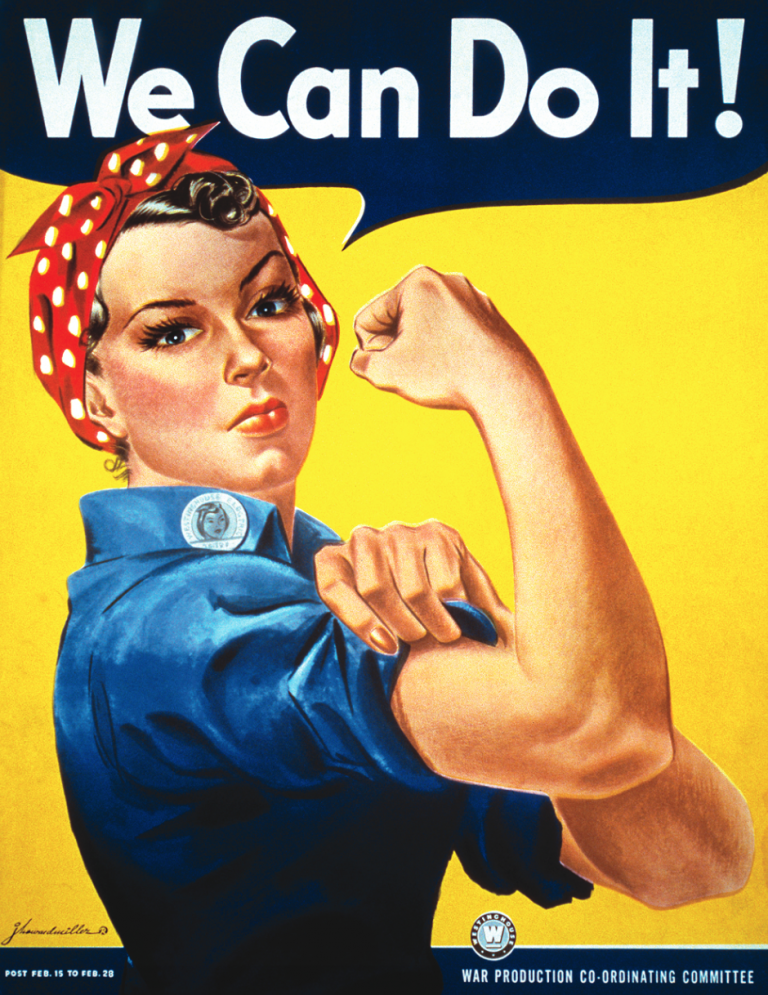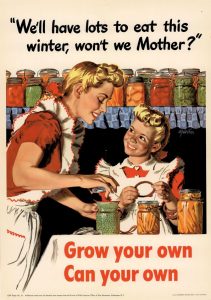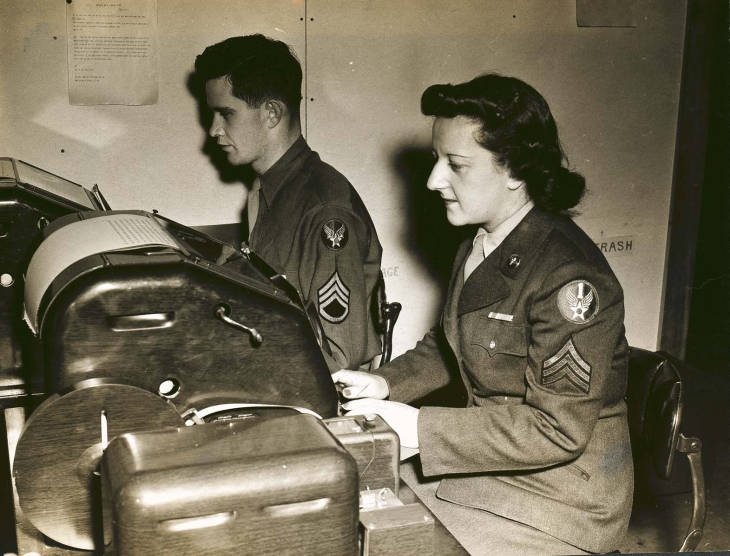Women on the Home Front in World War II
By Annette Medina
Background
On December 1941, The United States joined the fight against Nazi Germany after the Japanese attacked Pearl Harbor. Joining a major World War shortly after the end of the Great Depression really worried the American people (1). The worry of another economic crisis worried many, especially since men would be leaving their homes. Who would look after the families and take after the jobs if the men left for combat? Women stepped in and joined the workforce.

Propaganda
Have you ever seen this image pictured above? This famous picture is known as Rosie the Riveter, a feminist icon that still influences women today. It started off in 1942 when J. Howard Miller made a war propaganda poster to encourage women to join the workforce (2). Rosie is strong, feminine and determined, as the famous quote says, “We Can Do It!”. Although, Rosie is not the actual name of the woman pictured in the poster, it got the nickname from the song, Rosie the Riveter by Redd Evans and John Jacob Loeb(1943) (3). The song talks about Rosie being a capable woman who was making a difference. Here is an excerpt of the song:
All the day long,
Whether rain or shine,
She’s a part of the assembly line.
She’s making history,
Working for victory,
Rosie the Riveter.
Keeps a sharp lookout for sabotage,
Sitting up there on the fuselage.
That little girl will do more than a male will do.
Another big influencer was the First Lady, Eleanor Roosevelt. She focused on encouraging women through making uplifting videos that included celebrities like Katherine Hepburn (4). That of course, is one of the few propagandas that were focused on encouraging women to join. The majority of women up until the war, did not work a job and rather stayed at home to look after the home and children. If women worked, it was mainly out of necessity, but was not the norm. Even some men were hesitant with the idea of their wives working, but understood it was necessary. It is said that there were three different kind of women who joined the workforce. The first were the women who were already working another job, but left it in order to work a job that focused on war aid. The second kind of woman was the one who had worked before, but lost it due to events like the Great Depression. Lastly, and definitely most commonly, was the woman who had never worked outside of the home before (5).
“The Women of World War II.” Fox News, FOX News Network, 2011.
If that wasn’t tough enough to transition to, women also had to play both “roles” of the breadwinner and taking care of the home. With the war came a big shortage on everyday necessities like meat, sugar and gasoline, so woman learned to be efficient with what they had. Common approaches to having enough food was growing your own food, which was heavily promoted by the Office of War Information. Starting a garden was a lot easier in rural areas, as opposed to cities, but even then people grew small gardens on apartment rooftops and windows. As shown in the picture above, canning was also a way of not letting vegetables go to waste and ensure there is always food (6).
Women in Hartford
Initially when the idea of women joining the war effort, people in Hartford had mixed feelings on the issue. Like everywhere in the country, some opposed, but most were for it. In order to get enough workers, Margaret Van Dyck from West Hartford thought a nationwide draft was the best approach. There were so many ways to help whether one preferred a physical job or not. Many Hartford churches still standing today like South Congressional Church, Asylum Ave Baptist Church and the Auxiliary of Trinity Church served as Red Cross volunteers. As far as jobs that paid, women had the option of full-time or part-time, whichever fit their lifestyle better (7). Companies like General Electric hired many women during this time, but like today, there was a wage gap. When General Electric was confronted by this, they decided to raise their wages by only 2 cents (8). Our very own Bradley Airport, then known as Bradley Field, was an air base at the time of the war. Many women who were in our military forces worked there and were often ranked Sergeant or Lieutenant.
Conclusion
Overall, World War Two was the turning point where Women shifted from housewives to being a part of the continuing workforce. The war influenced the feminist movement of freedom and solidarity, which lead to a huge cultural shift in the United States. Some could argue that if it wasn’t for that sudden demand for women workers, our society today wouldn’t be the same.
Footnotes:
(1) “World War II Fast Facts.” CNN, Cable News Network, 17 Aug. 2017 (Accessed 16 May 2018).
(2) “Rosie the Riveter: Real Women Workers in World War II.” Library of Congress (Accessed 16 May 2018).
(3) “Rosie the Riveter" song by Redd Evans and Jonh Jacob Loeb. Library of Congress (Accessed 16 May 2018).
(4) “The Women of World War II.” Fox News, FOX News Network, 2011 (Accessed 16 May 2018).
(5) “Rosie the Riveter: Real Women Workers in World War II.” Library of Congress (Accessed 16 May 2018).
(6) To learn more, see, Brock, Julia. Beyond Rosie: A Documentary History of Women and World War II, University of Arkansas Press, 2015.
(7) “Women Will Register for Work June 10”. The Hartford Courant (1923-1992), May 22, 1942, (Accessed 16 May 2018, ProQuest).
(8) “Labor Board Recommends Wage Raise”. The Hartford Courant (1923-1992), Dec 30, 1945, (Accessed 16 May 2018, ProQuest).



